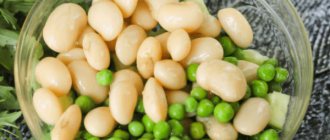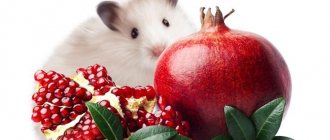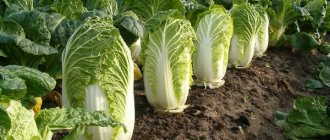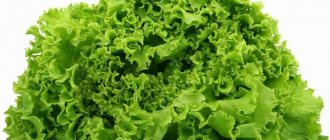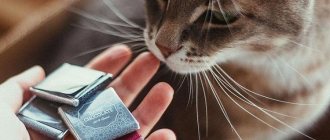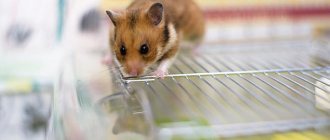What can you give to Djungarian hamsters?
The basis of the rodents' diet is cereals, vegetables and fruits. Everything else is given for a complete and varied diet.
Dry food
One way to create a diet for your hamka is to buy ready-made grain mixtures at the pet store. They contain grains, seeds and flakes. Buying such food will make life easier for the owner, but will deprive the pet of a full set of vitamins, minerals and proteins.
Did you know? Hamsters are omnivores. They eat grains, grass and berries, but also do not disdain grasshoppers or larvae
.
If your choice is on ready-made mixtures, then buy several types and change them periodically. Such manipulations will help balance the incoming vitamins.
What cereals can you give?
Cereals contain a large amount of vitamins and minerals that are beneficial for the life of a hamster.
You can feed your babies the following types:
- buckwheat or porridge;
- wheat, especially sprouted;
- oats and oat flakes;
- barley;
- pearl barley;
- legumes (lentils, chickpeas, peas).
Important! Hamsters should not be given spices or salt.
But there are some cereals that should be given in very small quantities because they give a feeling of heaviness in the stomach. It is advisable to give your hamster a minimum amount of millet and rice.
Is it possible to roast sunflower seeds?
Sunflower seeds are a very affordable treat for dwarfs. Raw seeds are full of vitamins, but fried seeds have less of them. Since it is not easy to find raw sunflower seeds on sale, you can pamper your hamster with a fried version. But the selected product should not be fried in oil and contain no salt. The best option would be seeds dried in the oven.
Dairy
Dairy products are not necessary in the diet of a small rodent. Since milk is quite fatty, it leads to indigestion. Cheese also has a high fat content, and plus it contains a lot of salt and thickeners.
These products can be given in minimal quantities (no more than once a week), or it is better to exclude them altogether. If you decide to feed your pet dairy products, then you need to choose low-fat options and cheeses with a good composition.
Meat and boiled egg
Protein is necessary for the growth and development of dwarfs. Hamsters get the bulk of their proteins from cereals, but they are allowed to give them additional protein products. You can treat your hamster to meat and offal (liver, heart, tongue). But it is worth remembering that you should not feed your baby fatty meats (pork, lamb).
We recommend reading about how to name a Djungarian hamster for a girl or a boy, and also learn how to train a hamster to respond to its name.
Lean meat (beef, chicken) and offal should be given boiled, without adding salt or spices. If an egg is chosen as a source of protein, then you should not throw away the yolk - it contains a lot of vitamins and healthy fats. There is no need to give a whole egg; you can treat your hamster with two-thirds of the white and one-third of the yolk. If you decide to add a quail egg to your diet, then feel free to give half a day.
It is better to eat eggs boiled, as there is less risk of infection with salmonella, but it is not forbidden to give them raw. It’s good to prepare a “salad” from a grated egg, carrots and your favorite cereal. Such a dish will contain a full range of proteins, fats, carbohydrates and vitamins.
Is it possible to have bread?
Although cereals make up the majority of a hamster’s diet, their derivatives should be limited. Bread (white and black) should not be given to your hamster, since flour lacks some of the beneficial substances found in whole grains, but it does contain yeast. The presence of yeast negatively affects the digestive tract of hamsters.
You will probably be interested in reading about how much Djungarian hamsters cost, what their life expectancy is, and how to find out the sex of a Djungarian hamster.
They can cause excessive gas formation, diarrhea and even gastritis. The only safe way to treat a Djungarian with bread is to give him a cracker. But it’s worth remembering that it should just be a piece of dried bread without spices or oil.
What nuts can you
Nuts (walnuts, cashews, hazelnuts, peanuts) must be included in your fluffy’s diet. They contain vitamins and healthy fats. However, because of the latter, you need to give them to your hamster in very measured doses - no more than two pieces per day. You can treat your pet with all nuts, except Brazil nuts and almonds.
Vegetables
The largest amount of foods allowed for the Djungarian hamster is contained in vegetables.
You can give almost anything:
- cucumber;
- radishes;
- bell pepper;
- cabbage (cauliflower and Chinese);
- carrot;
- zucchini;
- pumpkin;
- eggplant;
- beets;
- turnip;
- celery;
- tomatoes.
Do not give your baby vegetables (especially cucumbers and tomatoes) whose quality you doubt. If the fields were treated with pesticides, then such vegetables will be harmful to the hamster. Due to its miniature size, even small amounts of processed product can be fatal.
Fruits and berries
A hamster's life can be sweetened with fruits and berries. But remember that they contain quite a lot of sugar and can cause diabetes in your hamster. They should be given in limited quantities.
Djungarians are good at assimilating berries and fruits growing in our latitudes (apricots, apples, grapes, peaches, strawberries, gooseberries, plums, cherries). Exotic fruits (kiwi, mango, carom, pineapple, pomegranate), except banana, and citrus fruits should not be eaten by rodents.
Important! The sweeter the fruit, the less often it should be included in your hamster’s diet.
.
Dried fruits
Just as with fresh fruits, you should be careful with dried fruits (dried apricots, raisins, prunes, banana chips). They are often dried using sugar or syrup. Such treats are very harmful to the rodent and should not be given to them.
If you know for sure that dried fruits are prepared without added sugar, then you can safely treat your pet to them. It is best to choose products that are simply dried in the oven (apples).
Greenery
Greens not only perfectly diversify the diet of the dwarf, but also help him to be healthy. Essential oils, which are contained in small quantities in dill and parsley, prevent colds. Greens strengthen the immune system and help the digestive tract function. She is also a storehouse of vitamins. In addition to parsley and dill, you can safely give your pet lettuce, celery and spinach.
Did you know? Breeding and domestication of hamsters began in 1930.
Tree branches
Your hamster will be very interested if you give him twigs from trees to chew on. It is better to choose young twigs of fruit trees. Giving twigs of coniferous trees is strictly prohibited. The resin they secrete is harmful to rodents.
Antihyperglycemic drugs for diabetes in hamsters
Many diabetic hamsters maintain their diet on their own. This process is regulated by nature itself and the animal’s internal sense of self-preservation. Sometimes your veterinarian will prescribe additional treatments, such as fenugreek (Trigonella) or other specific medications, dietary supplements, and injectable homeopathy. Such drugs should be taken only with prior approval, as side effects can easily be caused.
Fenugreek is an herbal supplement that is available in some stores and green pharmacies. It has been shown to lower blood glucose levels in humans. Often this remedy is sold in seed form or as a powder placed in a capsule. Many hamsters may refuse to eat its seeds, in which case it is possible to make a tea from the powder or seeds (pre-grind the seeds), which may smell like curry. This tea or decoction is used to feed animals.
Glipizide (Minidiab, Glibenez, Glucotrol, Glidiazinamide, Melizide, Menodiab, Mindiab, Minibetic, Minodiab) is a drug that can only be purchased with a prescription and in agreement with a doctor or veterinarian. It is used to treat humans and cats. Effective studies have been conducted proving the positive effect of using Glipizide for Djungarian hamsters with diabetes. You need to be very careful with the dose, as sugar can drop significantly and sharply and liver problems will develop. There is no specifically defined recommended dose for hamsters. The amount of drug should be calculated using the cat dose and taking into account the smaller size of the hamster. Typically, you need to start with one dose (calculated by the veterinarian), increasing it every other day in accordance with the individual characteristics of the animal and the severity of its disease at the moment. Such calculations are performed by a veterinarian-ratologist, sometimes even based on his own experimental experience. The drug is available in tablet form, which must be crushed and diluted in a carefully measured amount of water to form the correct concentration. An experienced veterinarian who frequently uses Glipizide has no difficulty in calculating dosages.
Let us repeat, this drug is quite effective, but is a last resort in the treatment of diabetes in hamsters. When using Glipizide, we recommend, just in case, to have at least a small amount of honey or syrup in the house in case of resuscitation in case of a sharp drop in the hamster’s sugar .
What not to give to Djungarian hamsters
You should not give your pet everything. There are foods that are highly not recommended for dzhungarik:
- sausages and frankfurters (high fat content, salt);
- grilled meat;
- sorrel (large amount of acid);
- mint (menthol has a negative effect on the stomach);
- mushrooms;
- almonds (the presence of hydrocyanic acid makes them poisonous to hamsters);
- white cabbage (causes excessive gas formation);
- citrus;
- Exotic fruits;
- onions, garlic (too many essential oils);
- dates (lots of sugar);
- acorns (tannins in the composition negatively affect the gastrointestinal tract);
- pits of apples, cherries, apricots (they are poisonous to the hamster).
It will be useful for you to read about what kind of cage a Djungarian hamster should have.
How many times a day to feed
Khomkis love to eat and almost never refuse a treat. But don't get carried away with excessive feeding. This is fraught with obesity and other problems associated with excess weight.
Video: feeding the Djungarian hamster It is recommended to feed the animals no more than twice a day. Since hamsters are nocturnal, their main meal should be in the evening.
The baby will spend all the energy received from food during wakefulness. In the morning you can give lighter food and in small quantities. It will be ideal if you can feed your pet at the same time. This is very useful for the full functioning of his gastrointestinal tract.
Find out more about breeding and reproducing Djungarian hamsters at home.
Diabetes test for hamsters
If you suspect that your hamster has diabetes, perform a special test. It's quite simple and anyone can do it. Never treat your hamster for diabetes (including diet changes or herbal treatments) without confirming the diagnosis through testing and obtaining a clear veterinary assessment.
Measuring blood glucose in hamsters is not usually done outside the laboratory. The normal blood glucose level in a hamster is less than 7 mmol/L. However, blood tests can often be complicated by the complexity of the methodology and stress for the animal. Often they are not needed. Urine glucose tests are a more common test and are quite acceptable for making a diagnosis.
The procedure for checking a hamster for diabetes consists of the following points:
- Purchase a home urine test kit for sugar and ketones at any pharmacy.
- Read the instructions for more information to help prevent false test readings.
- Place the hamster in a clean container or box without bedding (preferably in the morning after sleep) until he urinates.
- Make sure your hamster has access to water.
- Dip the test strip into fresh urine, or collect the urine with a sterile syringe and wet the strip.
- Wait a little (the time is indicated in the instructions).
- Compare the results of the strip with the pictures on the test package.
If your hamster doesn't urinate within about 20 minutes, put him back in his cage and try again later. In principle, a diabetic hamster should urinate at least once during a given period of time. The presence of glucose in the urine suggests diabetes. If you suspect your hamster is sick, consult your veterinarian regardless of the results of the urine samples. If your hamster clearly has glucose or ketones in its urine, you should call your veterinarian as soon as possible.
How to give water to a dzhungarik
Water is necessary for the full life of any organism, and the Djungarians are no exception (even though they originally lived in dry steppes and deserts). The fluid that your hamster gets from vegetables and fruits is sometimes not enough.
Especially in hot weather, he may experience extreme thirst. For drinking, it is better to purchase a drip drinker, so your pet will have round-the-clock access to liquid. It is better to take purified water, as boiled water or just from a tap can be too hard.
In what form can cucumbers be given?
Vegetables bought in a regular store are not suitable for a hamster. Growing up in unknown conditions, they can cause poisoning of the body even in humans, not to mention a small weak animal. It is better to feed your hamster what was grown in a garden bed that is familiar to you, so that you know exactly how it grew and what it was fertilized with.
If there is no way to please your rodent with such delicacies, then give him store-bought cucumbers in small portions, after removing the peel. You can also soak the vegetable in cold water in advance to remove all harmful substances from it.
By the way, only fresh cucumbers are suitable as food for hamsters. Any preparation, especially pickled, is prohibited for them. Salt and vinegar used for the marinade can cause diseases of the genitourinary organs in the rodent, irritate the esophagus, and provoke allergies. Eating such vegetables can make your pet seriously ill.
